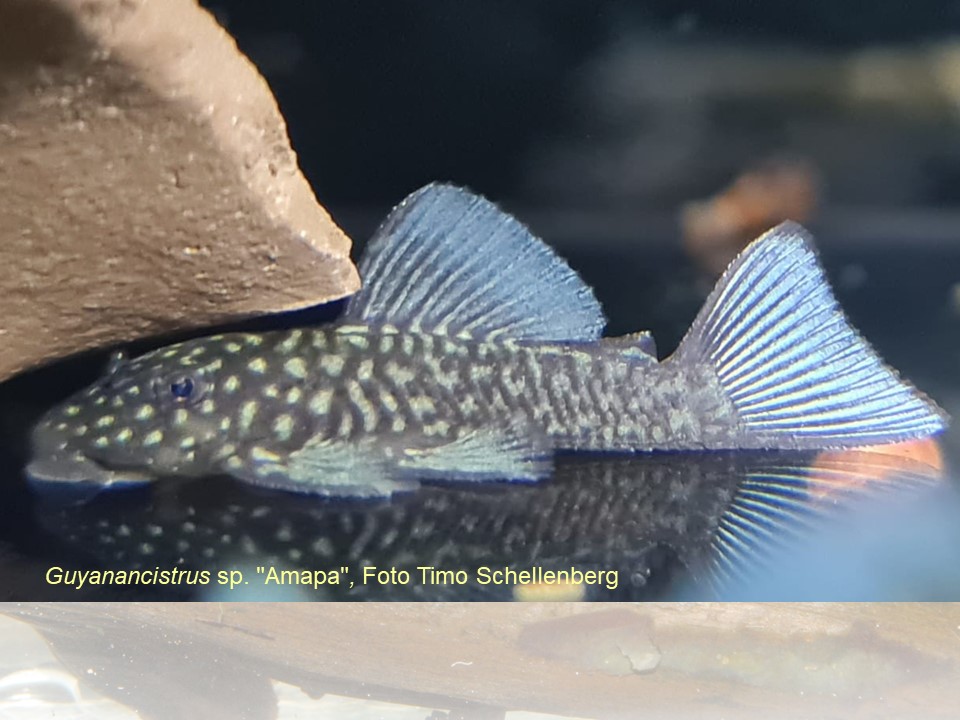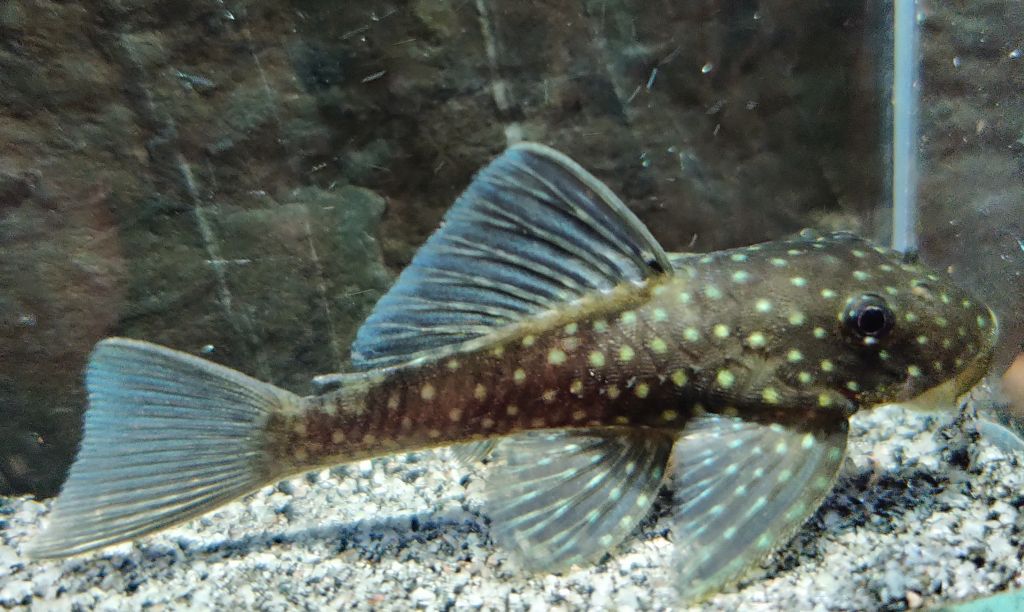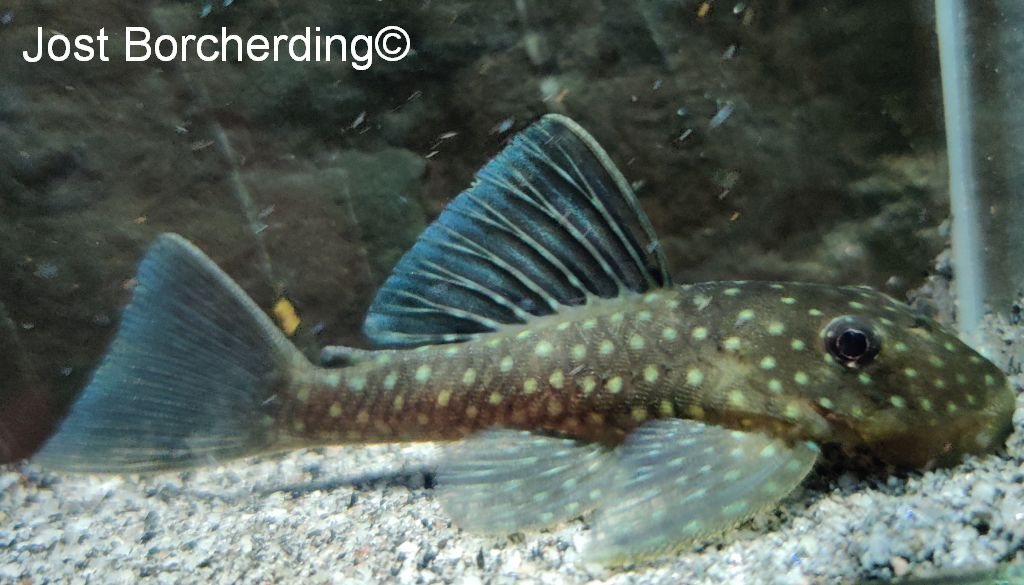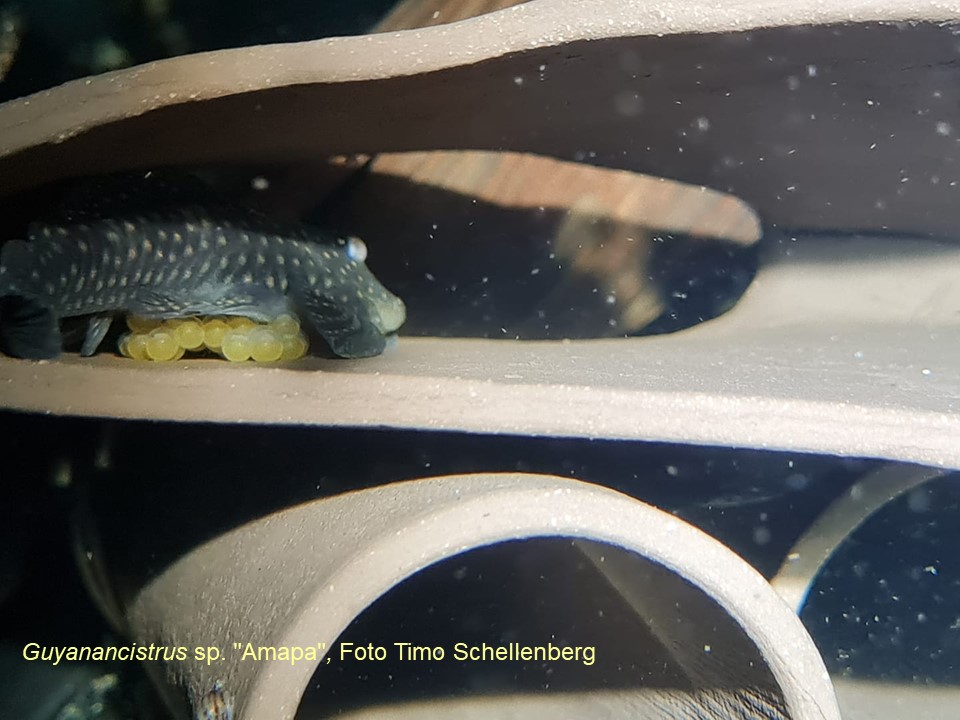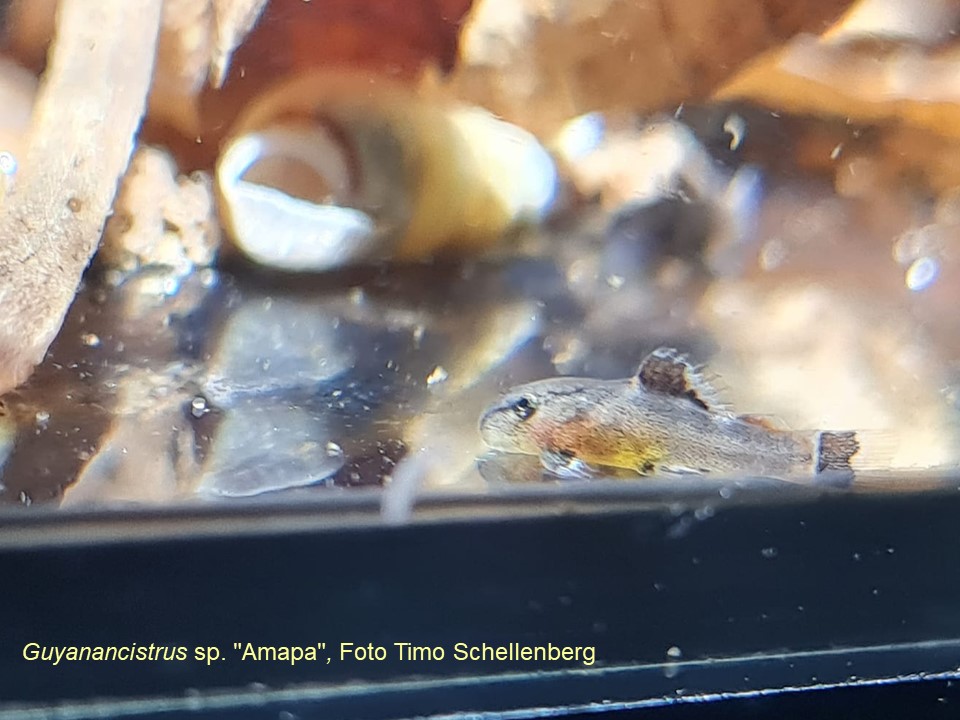Guyanancistrus sp Amapa
For a long time, this fish was considered a kind of phantom, which many aquarists wanted to keep in their aquariums after the first pictures, due to the wonderful blue fins. It was not until the 2017 Aquanet expedition to the Oyapock in French Guiana (border river to Brazil) that the animals were filmed and then brought to Germany. The wonderful video from Aquanet.tv about this expedition and the Guyanancistrus sp. Amapa can be found here:
https://www.youtube.com/watch?v=J8jbCWb4Xoo
At this point I would like to draw your attention in particular to a sequence from the video, which for me is a bit of a model for setting up an aquarium for this species and species that occur in similar habitats, or for species that can be regarded in a comparable way as crevice breeders:
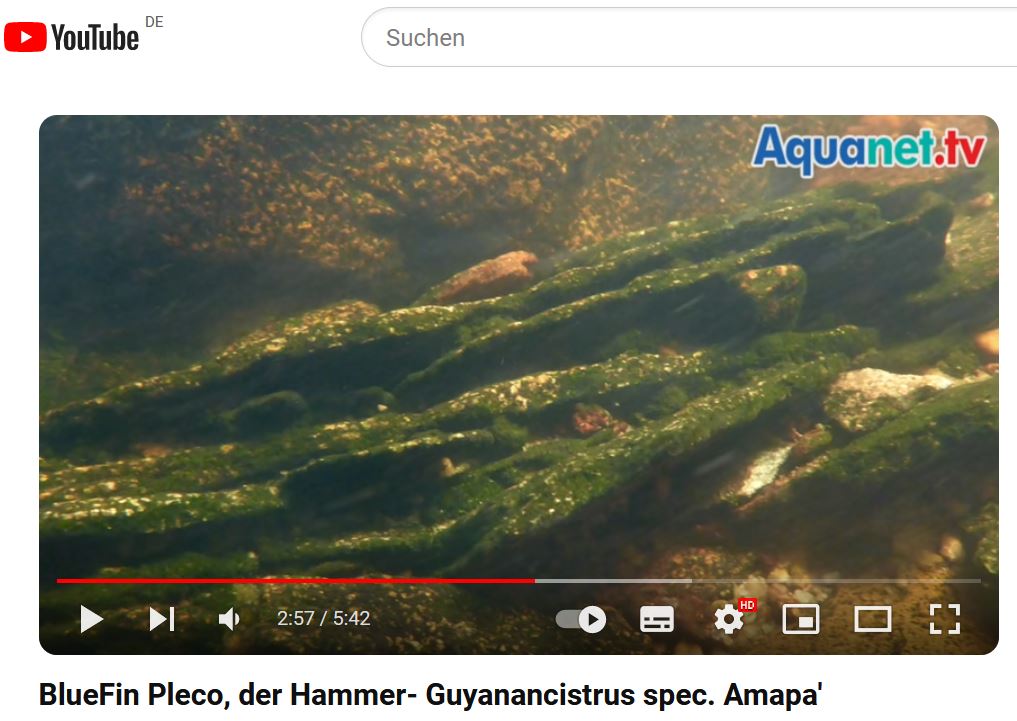
In some sources, this species is referred to as Guyanancistrus cf. longispinis ‘Amapa’, so it is assumed that this species ‘can be compared with’ (the abbreviation ‘cf.’ is derived from the Latin ‘conferre’). At the same time, however, this abbreviation also indicates a certain scepticism as to whether it really is the species in question. And in this case I share this scepticism, because the previously published pictures of Guyanancistrus longispinis (see e.g. PlanetCatfish or Scotcat) are only partially comparable with the fish shown here. And in the original description of the species (at that time still as Lasiancistrus longispinis, Heitmans, W.R.B., Nijssen, H., & Isbrücker, I.J.H. (1983). The Mailed Catfish Genus Lasiancistrus Regan, 1904, from French Guiana and Surinam, with Descriptions of Two New Species (Pisces, Siluriformes, Loricariidae). Bijdragen tot de Dierkunde, 53(1), 33-48. https://doi.org/10.1163/26660644-05301003) states in the relevant section: ‘Ground colour of skin tan, and of ossified parts greyish. Dorsum of body anterior to dorsal fin origin, and of head and snout with faint, pale spots, about a quarter the size of the eye. Fins without markings.’ Well, basically it fits halfway, but you really can’t say the same about this fish. Anyway, that’s a job for the systematists, and I’m certainly the last to do so!
Alex Wilke then brought animals back to Germany on a second expedition (I think in 2019 or 2020). And I got offspring of these animals from Timo Schellenberg, thanks Timo, but also thanks to Alex.
According to our current knowledge, the animals can be considered crevice breeders, see the following pictures by Timo, which would also fit the systematic classification of the genus Guyanancistrus between all the other crevice breeders such as Dekeyseria, Lasiancistrus and Pseudolithoxus.
And so I hope that I will soon be able to marvel at offspring in my aquariums when the animals move in, just like Alex and Timo before me.

